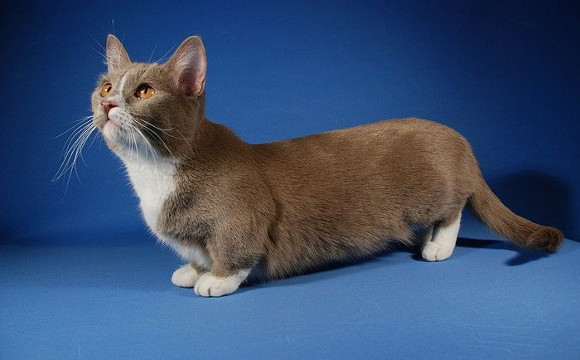Introduction
The Munchkin cat breed is known for its distinctively short legs, which have stirred both admiration and controversy among cat enthusiasts. This breed’s unique physical characteristics, history, and care needs make it a fascinating subject. In this comprehensive guide, we will delve into the history, physical attributes, personality traits, health concerns, and care requirements of the Munchkin cat breed.
History of the Munchkin Cat
The Munchkin cat’s history dates back to the 1930s when short-legged cats were documented in England. These cats, however, disappeared during World War II. The modern Munchkin breed began in 1983 in Rayville, Louisiana. Sandra Hochenedel, a music teacher, rescued two pregnant cats with unusually short legs. One of these cats, Blackberry, became the foundation of the Munchkin breed. Dr. Solveig Pflueger, a genetics expert, determined that the breed’s short legs resulted from a dominant genetic mutation.
Recognition and Controversy
The breed faced significant resistance before gaining recognition. In 1991, the International Cat Association (TICA) initially rejected the Munchkin for not having enough known about it. However, by 1994, the breed was accepted and gained New Breed and Color status in 1995. The acceptance sparked controversy, with critics arguing that the short legs might lead to health problems. Despite these concerns, breeders have found no evidence of joint or bone issues specific to Munchkins.
Physical Characteristics
Munchkins are medium-sized cats with a well-rounded body, walnut-shaped eyes, and various coat colors and patterns. They can be short-haired or long-haired, the latter having a semi-long silky coat with a full plume tail. The breed’s most defining feature, their short legs, does not hinder their mobility. Munchkins are agile and capable climbers, often taking alternative routes to reach higher places.
Personality and Behavior
Munchkin cats are known for their playful, outgoing nature. They enjoy interactive play and can often be seen wrestling with other cats. Their sociable disposition makes them great companions, and they are known to bond closely with their human families. Munchkins have a unique trait of “borrowing” small, shiny objects, which they stash away for later play. Despite their short legs, they exhibit the same agility and hunting prowess as any other domestic cat.
Health and Longevity
Generally healthy, Munchkin cats do not have breed-specific health issues related to their short legs. However, like all cats, they can be prone to common feline ailments such as heart disease and urinary tract infections. Regular veterinary check-ups are essential to ensure their well-being. Their average lifespan ranges from 12 to 15 years.
Care Requirements
Caring for a Munchkin cat involves standard feline care practices. Regular grooming is necessary, especially for long-haired varieties, to prevent matting and reduce shedding. Their diet should be well-balanced, with high-quality cat food providing essential nutrients. Regular play and exercise are crucial to keep them mentally and physically stimulated.
Munchkins and Their Environment
Munchkins adapt well to indoor living. They enjoy having various toys and climbing structures to explore. Their social nature means they thrive in environments where they receive plenty of attention and interaction from their human companions. Munchkins can coexist peacefully with other pets and are generally good with children.
Breeding and Genetic Considerations
Breeding Munchkin cats requires careful consideration to maintain genetic diversity and health. Outcrossing with domestic longhairs and shorthairs is necessary to keep the gene pool robust. Responsible breeders ensure that cats are healthy and free from genetic disorders before breeding. Prospective Munchkin owners should seek reputable breeders who prioritize the health and well-being of their cats.
The Future of the Munchkin Breed
The Munchkin breed continues to grow in popularity despite the initial controversy. Their unique appearance and charming personalities have won the hearts of many cat lovers. As more is understood about their genetics and health, the breed is likely to gain further acceptance and recognition within the cat fancy community.
Conclusion
The Munchkin cat breed, with its distinctive short legs and playful personality, offers a unique addition to the world of domestic cats. Understanding their history, characteristics, and care needs is essential for potential owners and enthusiasts. Whether you are considering adding a Munchkin to your family or simply fascinated by this breed, their story is a testament to the diversity and adaptability of our feline friends.

